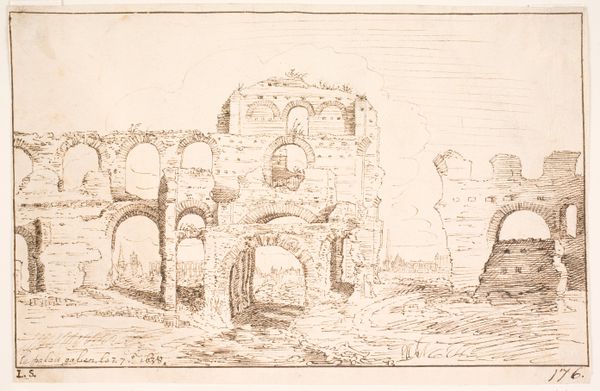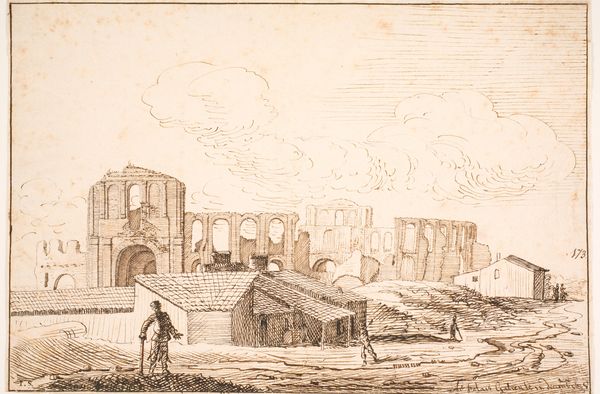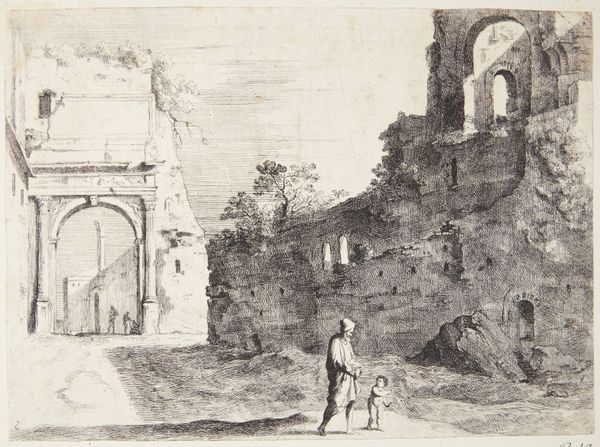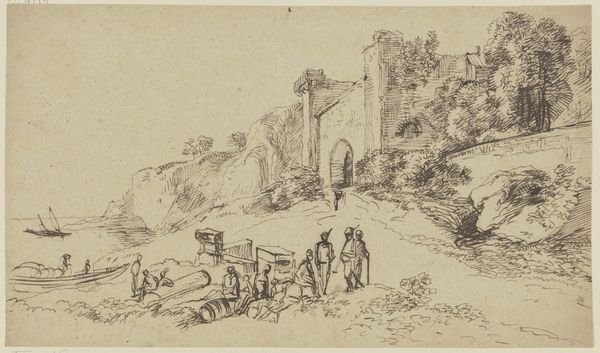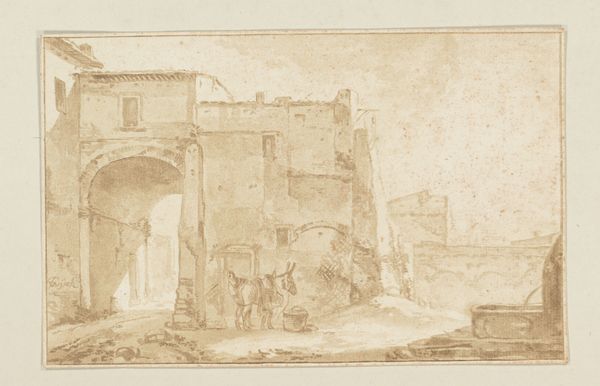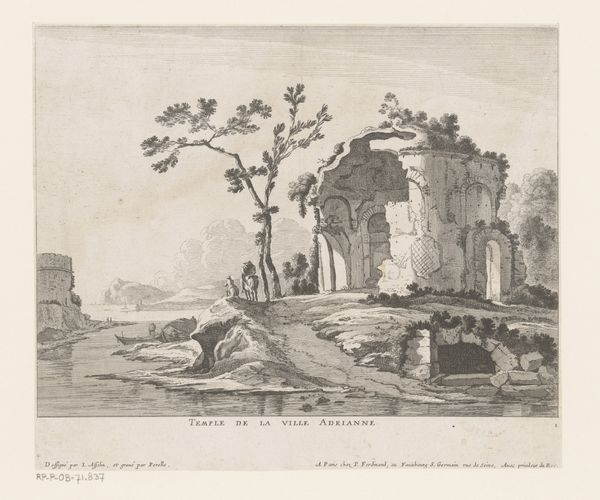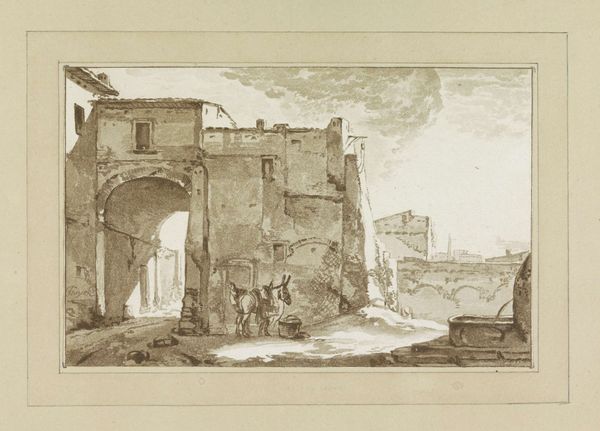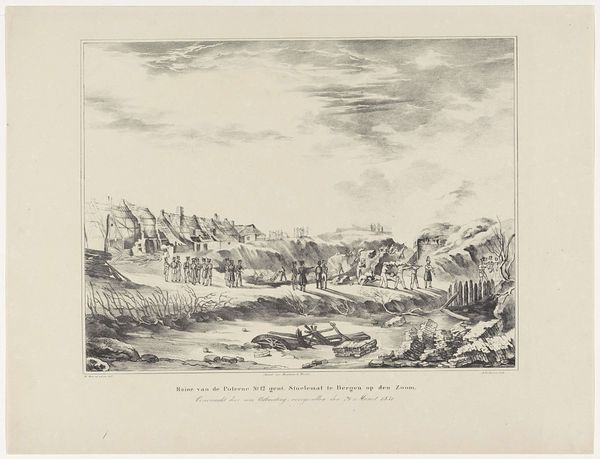
drawing, etching, ink
#
drawing
#
ink drawing
#
baroque
#
pen sketch
#
etching
#
landscape
#
etching
#
ink
#
line
#
cityscape
#
realism
Dimensions: 164 mm (height) x 233 mm (width) (bladmaal)
Curator: This is “Le Palais Galien, Bordeaux,” an ink and etching drawing completed around 1638. Editor: What strikes me immediately is the linework. It's sparse, almost skeletal, yet it manages to convey such depth and ruin. The weight of the architectural forms against the openness of the sky creates a distinct tension. Curator: Precisely. Note how the artist utilizes the etching technique to depict the degradation of the Galien Palace, contrasting solidity with decay. There’s a calculated deployment of line, indicating varying textures and the passage of time etched onto the stone. Editor: And look at how the two figures in the foreground – perhaps spectators, maybe locals– give the ruined building a new scale and public role. I wonder how this image circulated at the time, how its viewers might have responded to this depiction of faded Roman grandeur? Curator: We can infer from the landscape context, which emphasizes the palace’s relationship with its setting and serves to accentuate its gradual collapse into it. The delicate network of lines delineates a tangible dialogue between the constructed and the organic. The materiality of the ink underscores a deliberate attention to detail within each pen stroke. Editor: True, but beyond materiality, there’s also an intriguing tension between documenting an actual site, while also constructing an idealized image of Roman ruins. Consider how baroque sensibility idealizes historical themes in contrast with emerging realist landscape, with hints of how architectural representation helps develop civic identity and shape social perceptions about both the past and future of Bordeaux. Curator: Yes. And on further consideration, it would seem as if those cumulous clouds are deliberately designed as linear echoes of the ruined architectural arches; consider the drawing surface here. There's almost a suggestion of semiotic resonance between elements. Editor: Fascinating how an etching seemingly devoid of emotion, using limited lines, tells such a rich cultural narrative! Curator: Indeed, it offers a layered exploration of line, ruin, and historical context within a carefully considered composition. Editor: Well, its depiction of decay really leaves its mark on one’s mind, both visually and historically.
Comments
No comments
Be the first to comment and join the conversation on the ultimate creative platform.
